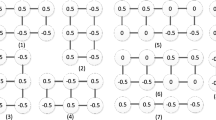Abstract
Steganography in sparse domain has drawn more and more attention in the past few years due to its high security. In this paper, we propose a sparse domain steganography based on morphological component for grayscale images. Images are composed of two morphological components—piecewise smooth (cartoon-like) parts and textures. Complex contents of images are harder to be modeled, such as textures, thus cannot easily be detected when we embed secret data in them. By properly select dictionaries, content-adaptive steganography in sparse domain can have rather large payloads and low statistical detectability. We combine two dictionaries to obtain sparse coefficients of morphological components of an image, separately. When embedding in sparse domain, we give top priority to coefficients of textures. We present two ways to construct these two kinds of dictionaries in our work, dictionaries using mathematical models as well as dictionaries wisely learned by K-SVD algorithm. Experiments show better visual quality of stego-images and undetectability of secret messages in comparison with other methods in sparse domain.
Access this chapter
Tax calculation will be finalised at checkout
Purchases are for personal use only
Similar content being viewed by others
References
Cancelli G, Barni M (2007) MPSteg-color: a new steganographic technique for color images. In: Information hiding: 9th international workshop (IH2007), vol. 4567, Saint Malo, France, June 11–13, pp 1–15
Cancelli G, Barni M (2009) MPSteg-Color: data hiding through redundant basis decomposition. IEEE Trans Inf Forensics Secur 4(3):346–358
Starck J-L, Elad M, Donoho DL (2003) Image decomposition: separation of texture from piecewise. In: SPIE meeting, vol 11(6), pp 670–684
Fadili MJ, Starck JL, Bobin J, Moudden Y (2010) Image decomposition and separation using sparse representations: an overview. Proc IEEE 98(6):983–994 (special issue on sparse representations in signal and image processing)
Schaefer G, Stich M (2004) UCID—an uncompressed colour image database. In: SPIE international conference on storage and retrieval methods and applications for multimedia, pp 472–480
Aharon M, Elad M, Bruckstein AM (2006) K-SVD: an algorithm for designing of overcomplete dictionaries for sparse representation. IEEE Trans Signal Process 54(11):4311–4322
Filler T, Judas J, Fridrich J (2011) Minimizing additive distortion in steganography using syndrome-tellis codes. IEEE Trans Inf Forensic Secur 6(3):920–935
Chen X, Wang Y, Tan T, Guo L (2006) Blind image steganalysis based on statistical analysis of empirical matrix. In: Proceedings of 18th international conference on pattern recognition, vol 3, pp 1107–1110
Pevny T, Bas P, Fridrich J (2010) Steganalysis by subtracting pixel adjacency matrix. IEEE Trans Inf Forensics Secur 5(2):215–224
Goljan M, Fridrich J, Holotyak T (2006) New blind steganalysis and its implications. In: Proceedings of SPIE, vol 6072, pp 1–13
Acknowledgments
This paper is supported by the National Natural Science Foundation of China (NSFC) under Grant No. 61170207.
Author information
Authors and Affiliations
Corresponding author
Editor information
Editors and Affiliations
Rights and permissions
Copyright information
© 2014 Springer-Verlag Berlin Heidelberg
About this paper
Cite this paper
Zhang, L., Wang, J. (2014). Information Hiding Based on Morphological Component. In: Jia, L., Liu, Z., Qin, Y., Zhao, M., Diao, L. (eds) Proceedings of the 2013 International Conference on Electrical and Information Technologies for Rail Transportation (EITRT2013)-Volume I. Lecture Notes in Electrical Engineering, vol 287. Springer, Berlin, Heidelberg. https://doi.org/10.1007/978-3-642-53778-3_48
Download citation
DOI: https://doi.org/10.1007/978-3-642-53778-3_48
Published:
Publisher Name: Springer, Berlin, Heidelberg
Print ISBN: 978-3-642-53777-6
Online ISBN: 978-3-642-53778-3
eBook Packages: EngineeringEngineering (R0)




